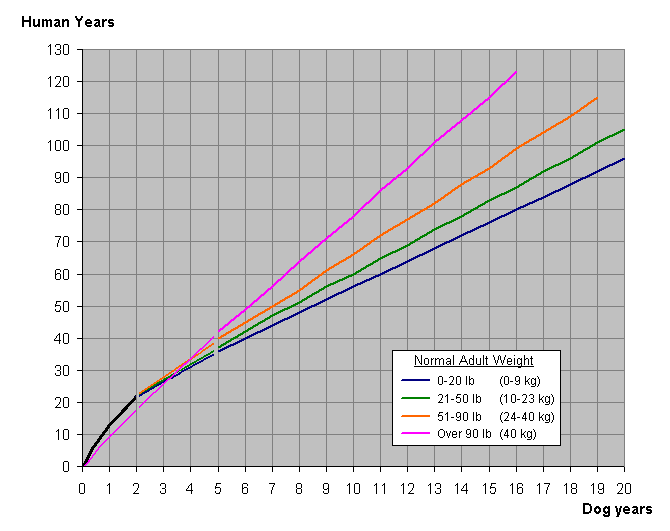
We all know the saying. We have all heard it repeated many times. But what is the truth behind the old adage that one dog year is equal to seven human years? Unfortunately, there’s no solid rule on this supposed age ratio. Actually, to date, there isn’t even any accurate scientific data on this topic.
One of the problems with confirming this well-known formula via scientific methods is that every breed of dog can age and mature differently. Nutrition, weight, genetics, and environmental factors all come into play when comparing dog years to human years. It must also be taken into account that the one to seven ratio is likely to be inaccurate at the early and late stages of life. The formula just does not work out right for very young or very old dogs.
For example, a 1-year-old dog may have reached puberty by canine standards but this does not really correlate to a 7-year-old human girl or boy. So, to simplify, one dog year can be considered equivalent to seven human years in the “middle-aged” years only.
Here is a much better guide to comparing the age range of the two species:
- Year 1 of a puppy’s life is equivalent to a human teenager (approximately a 13 years old)
- Year 2 for a pet is equivalent to a young adult (approximately a 22 year old)
- Each year after that is equivalent to approximately four human years.
The graph below shows a more accurate representation of dog years to human years based on the weight of your pup.
The average lifespan of a dog seems to vary according to their adult size, which is usually a factor of breed. Small dogs often live between 15 to 16 years, medium and large size dogs typically live 10 to 13 years, and some giant dog breeds often live only 7 to 8 years. Giant breeds also tend to mature slightly at an older age than smaller breed. They become “adult” at around two years old compared to around 15 to 18 months for other breeds.
The notion of a human year being equivalent to seven dog years is really a misconception. There is no real solid rule that can apply to all breeds and sizes when it comes to comparing dog years with human ones. Many factors must be considered and a more adaptable scale is needed to account for different maturity rates between our two species. Whether your dog is big or small, a child or a full grown mature adult, we have the perfect personalized pet tags to fit their attitude!
-Russ Barker
Russ Barker has the perfect last name to work in the pet industry. He is a rising star at DogTagArt.com, a company whose passion and goal is making sure as many pets as possible are protected with pet ID tags. In order to assure a safe return when lost, they offer beautiful full-color custom dog tags with over 500 designs and the ability to create a unique tag using your own photos or artwork.


